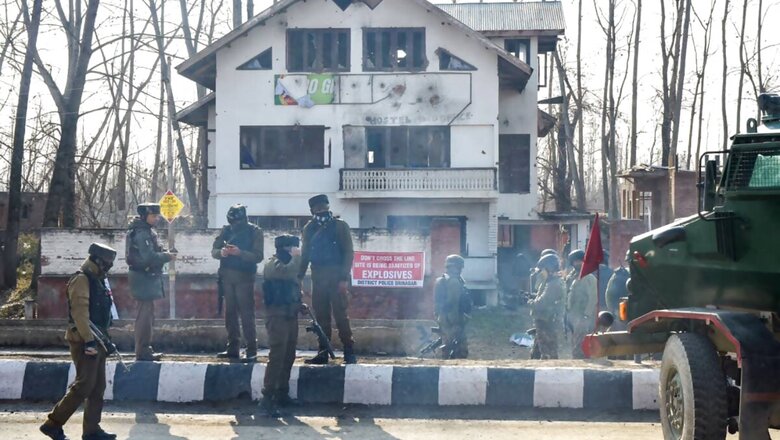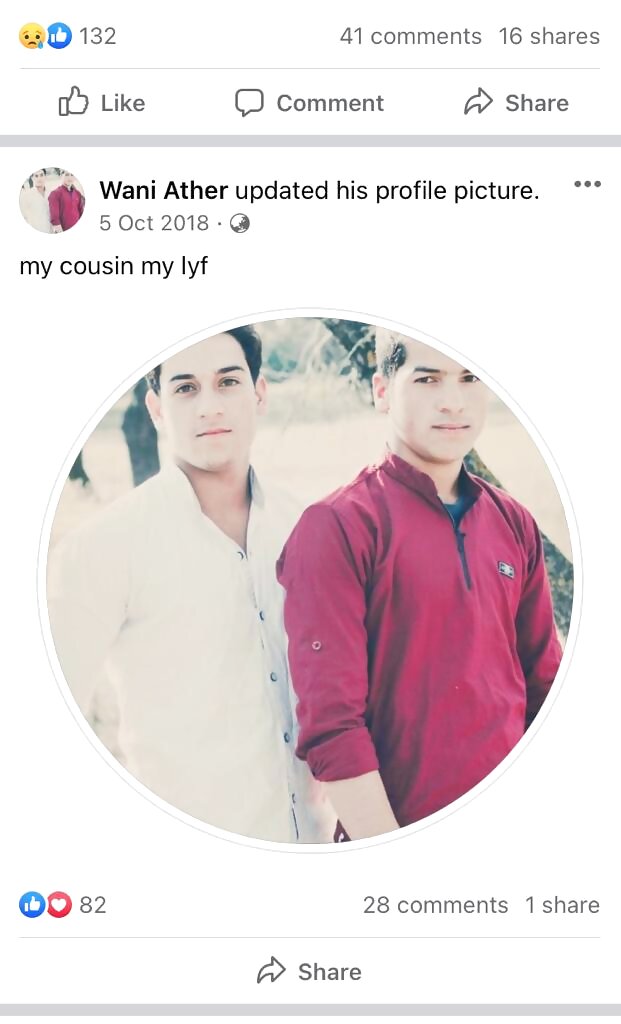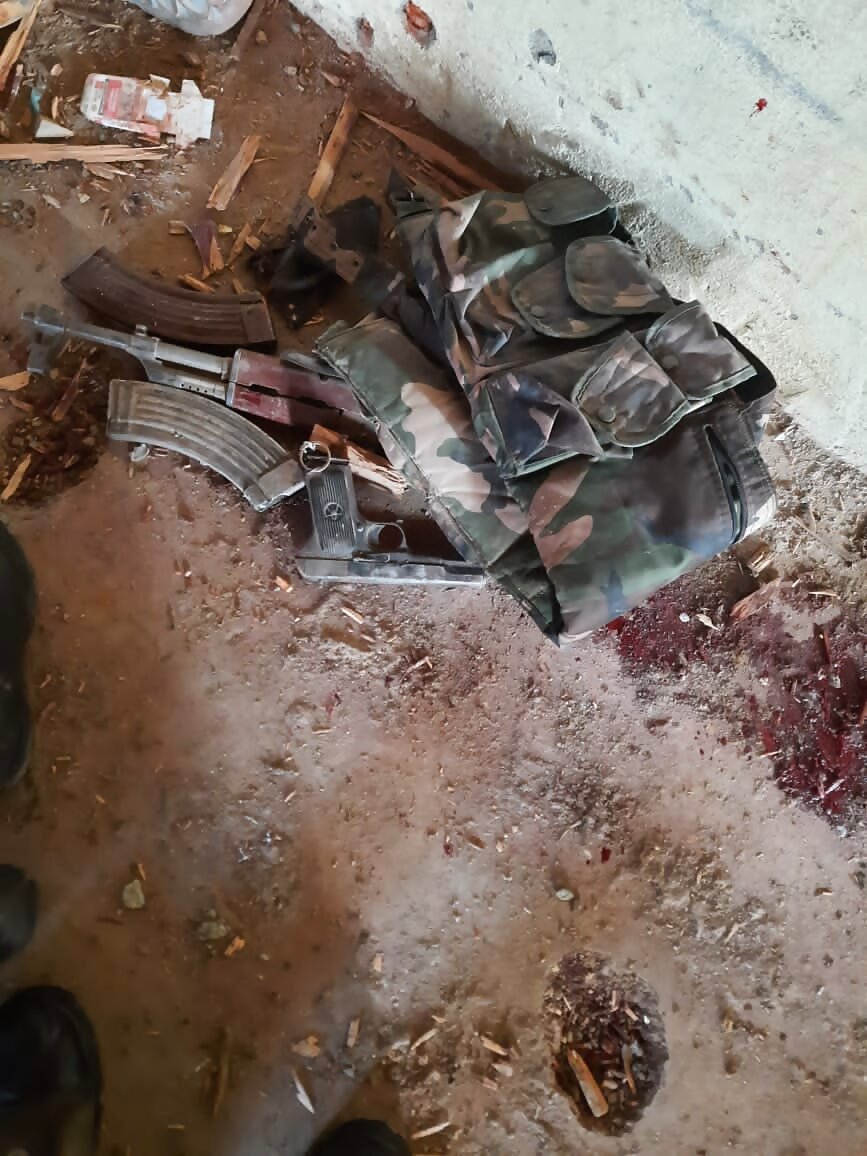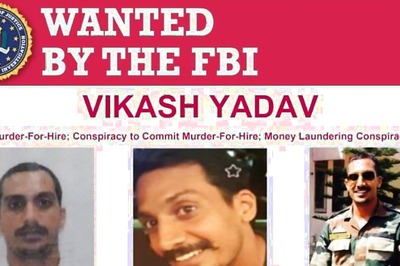
views
The Facebook page he left behind is a kind of Generation-Z ode to Narcissus, son of the river god Cephissus and the nymph Liriope, who fell in love with his own reflection: A gentle stream of selfies of a young man with perfect hair and skin, bearing little resemblance to the battered body of Ather Mushtaq Wani, riddled through with bullets in an exchange of fire with the Indian Army.
There’s one picture, though, that stands out: Wani posing with slain Hizb-ul-Mujahideen operative Rayees Ahmad Wani, “my cousin my lyf”.

Ather Wani with his cousin, top Hizb-ul-Mujahideen commander Rayees Wani
Families of the three young men shot on Srinagar’s outskirts before dawn on Wednesday —Aijaz Maqbool Ganie, from Putrigam in Pulwama, Zubair Lone, from Turkwangan near Shopian, and Wani, from the village of Belov, near Pulwama — allege their sons were killed in cold blood. The Army insists its troops were fired on, and claims at least two of the men worked for a Lashkar-e-Taiba linked jihadist group.
Like so much else in Kashmir, the truth of exactly what happened in the Srinagar suburb of Hokersar is veiled by a strange fog of blood and lies.
As per the testimony of Ganie’s mother, her son, just out of school, left for Srinagar at 11am on Tuesday to submit admission forms at Kashmir University. Ganie phoned again, the family says, just after 3pm to say he’d need another day to finish his work at the University, and return the next day. The family says it assumed he would stay with friends or relatives.
Like Ganie, Wani — whose last Facebook post records his graduation from high school — left home saying he was submitting university-entrance forms. The family says he left alone, and did not mention plans to stay at home.
Zubair Lone, for his part, was at home until lunchtime on Tuesday, a neighbour told News18. “He worked as a carpenter at construction sites,” the neighbour said. “So when he didn’t return that night, no one was worried. The family assumed he’d found work somewhere.”
The three men, police sources told News18, were not named in First Information Reports connected to terrorist activity, nor questioned in connection with past investigations into jihadist networks. Ganie’s father, Muhammad Maqbool Ganie, is a police officer stationed in the central Kashmir district of Ganderbal.
“No one becomes a terrorist between lunchtime and dinner,” Lone’s neighbour said. “We’d have known if he was involved in something.”
Kashmir police and intelligence officials disagree.
Local residents had massed on Belov’s streets in the summer of 2017, to mourn the killing of Hizb-ul-Mujahideen jihadist Rayees Ahmad Wani — widely known by his nickname ‘Kachroo’ or ‘brown-hair’. Thousands watched as Wani’s body, draped in a Pakistani flag, was marched to the graveyard; some fought for the privilege of kissing the body of man they believed to be a martyr. Hizb-ul-Mujahideen jihadists fired guns as the body was lowered into its grave.
In the months that followed, a senior Jammu and Kashmir police officer told News18, Ather Mushtaq was drawn into the networks of The Resistance Front — a Lashkar-e-Taiba led group that has become increasingly active in Kashmir.
Led by Kasur-based jihadist Sajid Saifullah Jatt — whose abandoned son, Umar Rather, lives in Damdullah, not far from Belov — the TRF has funnelled growing quantities of explosives and arms across the Line of Control, allowing it to stage multiple assassinations and execution-style killings.
Ganie and Wani, the Army claims, had been tasked in recent weeks with staging a strike against military convoys moving along Srinagar’s suburbs. Their safehouse in Hokersar, an official press release states, was cordoned off by troops of the Indian Army’s 2 Rashtriya Rifles late on Tuesday night, based on specific intelligence of the plot.
From inside the house, the Army says, the three men first threw a grenade at the troops, and then opened fire with an assault rifle. The firefight went on fitfully through the night, the Army says, ending at 11:30am on Wednesday. A single Kalashnikov assault rifle and two pistols were recovered from the safe-house — recoveries typical of the relatively thinly armed jihadist cells which have emerged through 2020.

Weapon recovered from encounter site at Hokesar
“Lone, who we believe was the most recent recruit to the group, tried to respond to our repeated appeals for the terrorists to surrender,” an officer familiar with the operations told News18. “He just couldn’t make it out, though, because the other two fired on him.”
Tuesday’s shootout took place under the toxic shadow of the killings of three Shopian residents, allegedly passed off as terrorists by Captain Bhupinder Singh of the 62 Rashtriya Rifles and two of the unit’s local informants, Bilal Ahmad and Tabish Ahmad. Lieutenant-Governor Manoj Sinha and XV Corps Commander Lieutenant-General BS Raju’s decision to aggressively prosecute the case against the rogue officer marked a landmark break with a long-standing culture of impunity.
Even though the army and police’s account of what happened at Hokersar is far from implausible, little evidence has so far been released to support it — fuelling fears they might have been victims of a similar extra-judicial execution.
There has been no explanation, for example, of why the intelligence services and police —knowing, by the official account, that Ganie and Wani had Lashkar links — didn’t seek to arrest the men as they travelled to Srinagar. There’s been no disclosure, either, of the evidence suggesting the three men were linked to the Lashkar.
For the families of the three slain men — and many others across Kashmir — the lack of a clear account of what happened indicates their sons were kidnapped and killed.
Killings of terrorists have risen significantly in 2020 over 2019, many of those new recruits to jihadist groups, thinly armed and with no military training. The government has, in recent weeks, moved to encourage trapped terrorists to surrender. Few encounters have been followed by the release of evidence on the involvement of the victims in terrorism — stoking anger among communities across southern Kashmir.
“The obsession with kill-counts,” a senior police officer argued, “has profoundly damaged India’s interests in Kashmir”. “The thinking has been that killing new recruits will deter recruitment into jihadist groups, but the data suggests that our policies are having the opposite outcome.”
Police officials familiar with the Hokesar shootings insist no wrongdoing was done. “We have cellphone records which track the movements of the three men through Tuesday,” one said, “which will make clear what route they travelled, when they met, and where they went. There are wiretaps and source reports.”
“The only lies here are the ones the boys told their kin,” the officer insisted, “and those lies eventually claimed their lives.”
Few in southern Kashmir seem willing to believe the official case. “Tell us why our son was killed,” Ganie’s grandfather, Bashir Ahmad, said on Wednesday. “If they can’t, let them send the Army and kill us all at home.”
The whole story needs to be told — and it’s in India’s interests to tell it transparently.
Read all the Latest News, Breaking News and Coronavirus News here


















Comments
0 comment